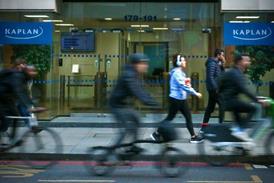More than 3,500 applications for civil legal aid in cases involving domestic violence or child abuse have been refused since reforms were introduced two years ago, official statistics have revealed.
Legal aid statistics published by the Ministry of Justice show that the Legal Aid Agency received 10,455 applications between April 2013 and December 2014 for civil representation legal aid in private family law cases where there was a risk of domestic violence or child abuse.
During the same period 6,916 applications were granted, though the ministry said not all applications granted in a period necessarily related to applications received within the same period. The majority of applications cite evidence relating to domestic violence.
The Legal Aid, Sentencing and Punishment of Offenders Act 2012, which came into effect in April 2013, removed legal aid from the majority of private family law matters. However, applicants are granted legal aid for cases where they can prove the incidence or risk of domestic violence or child abuse through a range of prescribed forms of evidence.
Earlier this year the High Court rejected a challenge, brought by the Public Law Project on behalf of lawyers’ group Rights of Women, and supported by the Law Society, to rules introduced in April 2013 in which some of the forms of evidence that victims of domestic violence are required to provide in order to apply for family law legal aid are subject to a 24-month time limit, despite the fact that perpetrators may remain a lifelong threat.
Quarterly figures show that applications for exceptional case funding (ECF) fell by 31% between October and December 2014 compared with the same period in 2013.
An ECF application for civil legal services is made where a case falls outside the scope of civil legal aid but the client or conducting solicitor believes there is a requirement to provide funding because failure to do so would breach the Human Rights Act.
Of the 209 new ECF applications the LAA received, the average turnaround time for assessment was 15 working days against a target of 20 working days. But for the 71 applications that were resubmitted for review, the average turnaround time was one day over the 11-day target.
Meanwhile, statistics show that the largest reduction in workload within criminal legal aid between October and December 2014 and the same period in 2013 was in representation in magistrates’ court, which fell by around 8,000 cases.
Total expenditure on very high cost cases was £10m – a 26% reduction compared to the previous year. The MoJ said falling VHCC costs were due to changes in rates paid and a reduction in the proportion of cases classified as a VHCC due to the threshold being increased from 40 days to 60 days in April 2013.
The value of cases completed between October and December 2014 was just over £410m, representing an 11% reduction on the same period in 2013, with payments split nearly evenly between criminal and civil legal aid.

















![David Lester (senior partner at Blythe Liggins), Darryl Barnes, Jagdeep Sandher (head of dispute resolution at Blythe Liggins)[4]](https://d1d8vslyhr7rdg.cloudfront.net/Pictures/274x183/4/2/8/116428_davidlesterseniorpartneratblytheligginsdarrylbarnesjagdeepsandherheadofdisputeresolutionatblytheliggins4_981603_crop.jpg)






1 Reader's comment